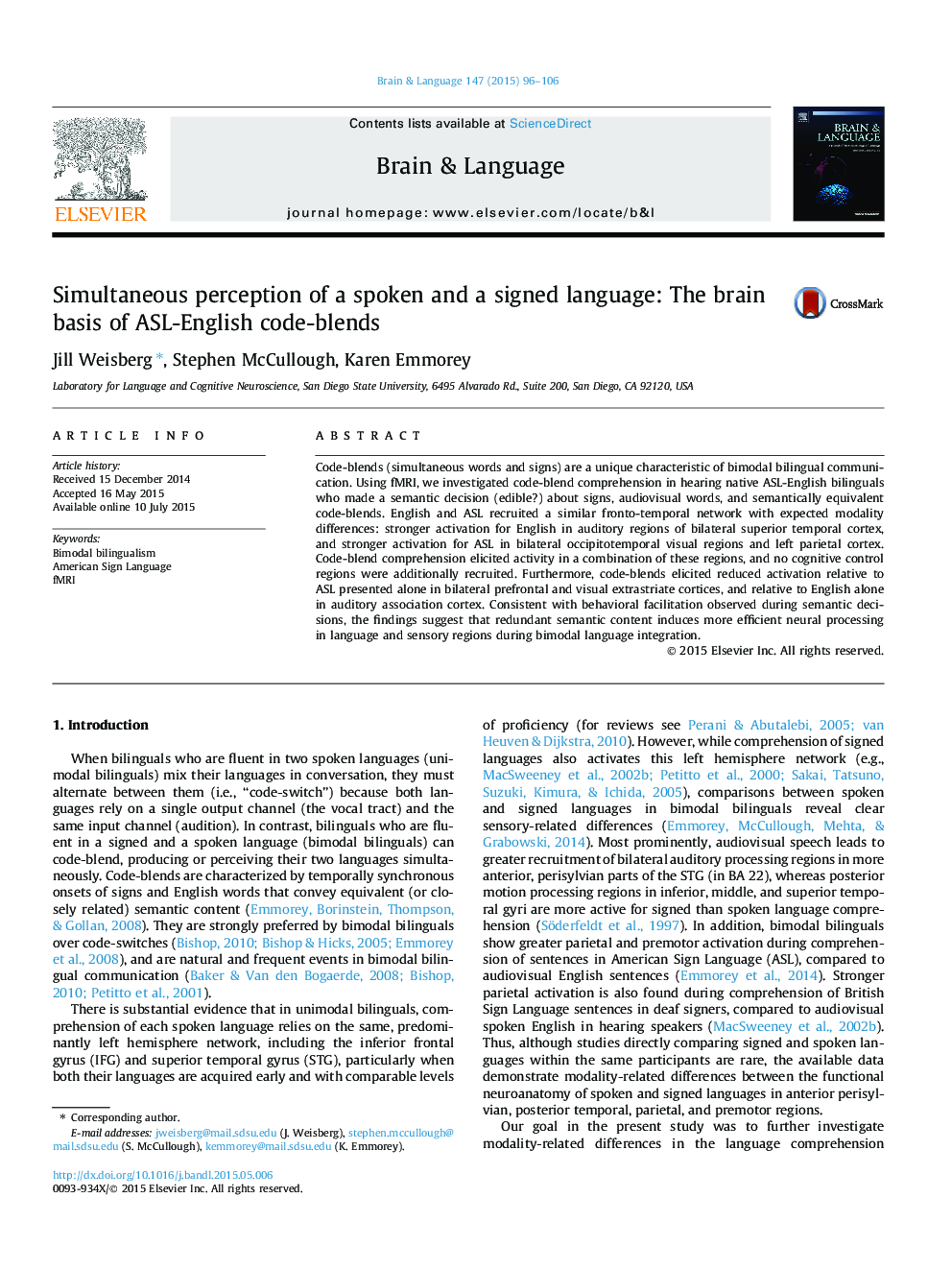| Article ID | Journal | Published Year | Pages | File Type |
|---|---|---|---|---|
| 7284276 | Brain and Language | 2015 | 11 Pages |
Abstract
Code-blends (simultaneous words and signs) are a unique characteristic of bimodal bilingual communication. Using fMRI, we investigated code-blend comprehension in hearing native ASL-English bilinguals who made a semantic decision (edible?) about signs, audiovisual words, and semantically equivalent code-blends. English and ASL recruited a similar fronto-temporal network with expected modality differences: stronger activation for English in auditory regions of bilateral superior temporal cortex, and stronger activation for ASL in bilateral occipitotemporal visual regions and left parietal cortex. Code-blend comprehension elicited activity in a combination of these regions, and no cognitive control regions were additionally recruited. Furthermore, code-blends elicited reduced activation relative to ASL presented alone in bilateral prefrontal and visual extrastriate cortices, and relative to English alone in auditory association cortex. Consistent with behavioral facilitation observed during semantic decisions, the findings suggest that redundant semantic content induces more efficient neural processing in language and sensory regions during bimodal language integration.
Related Topics
Life Sciences
Neuroscience
Biological Psychiatry
Authors
Jill Weisberg, Stephen McCullough, Karen Emmorey,
